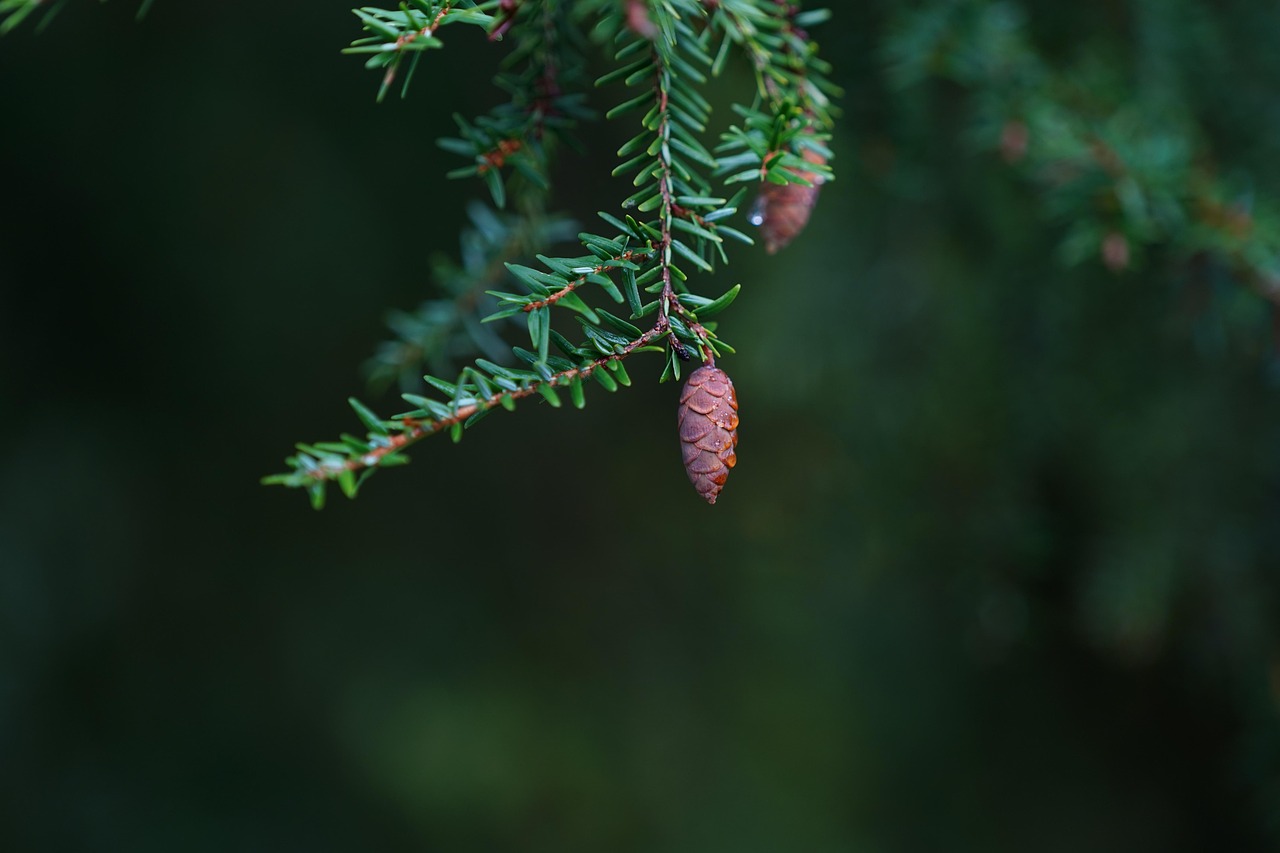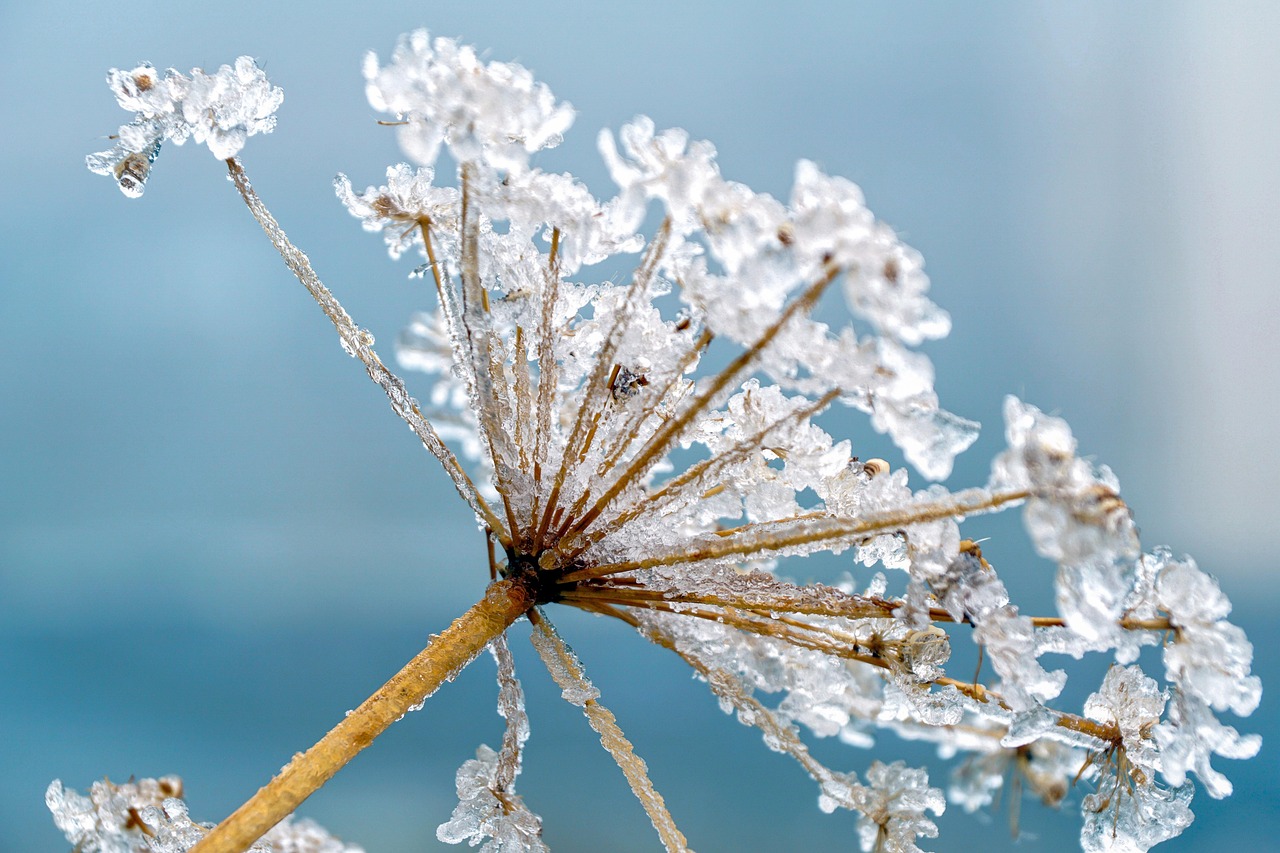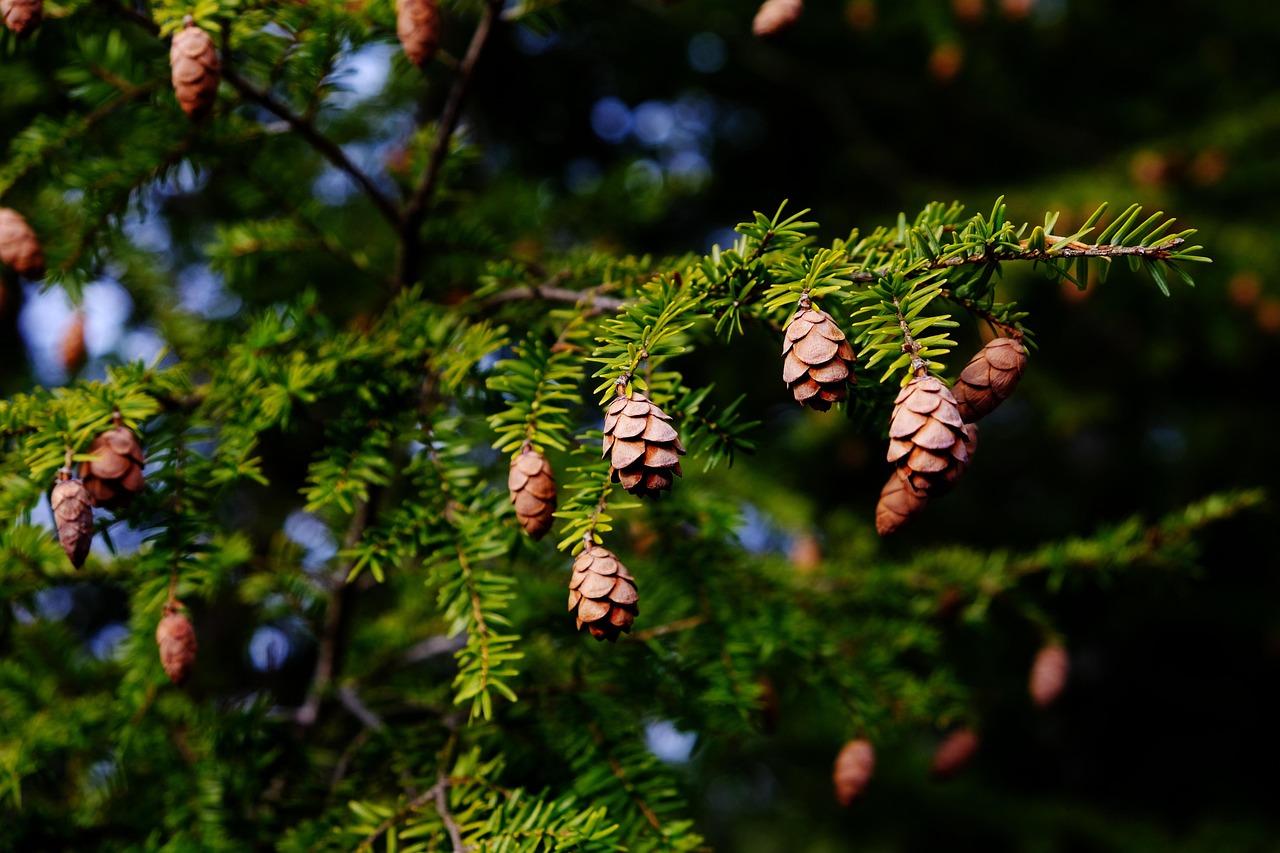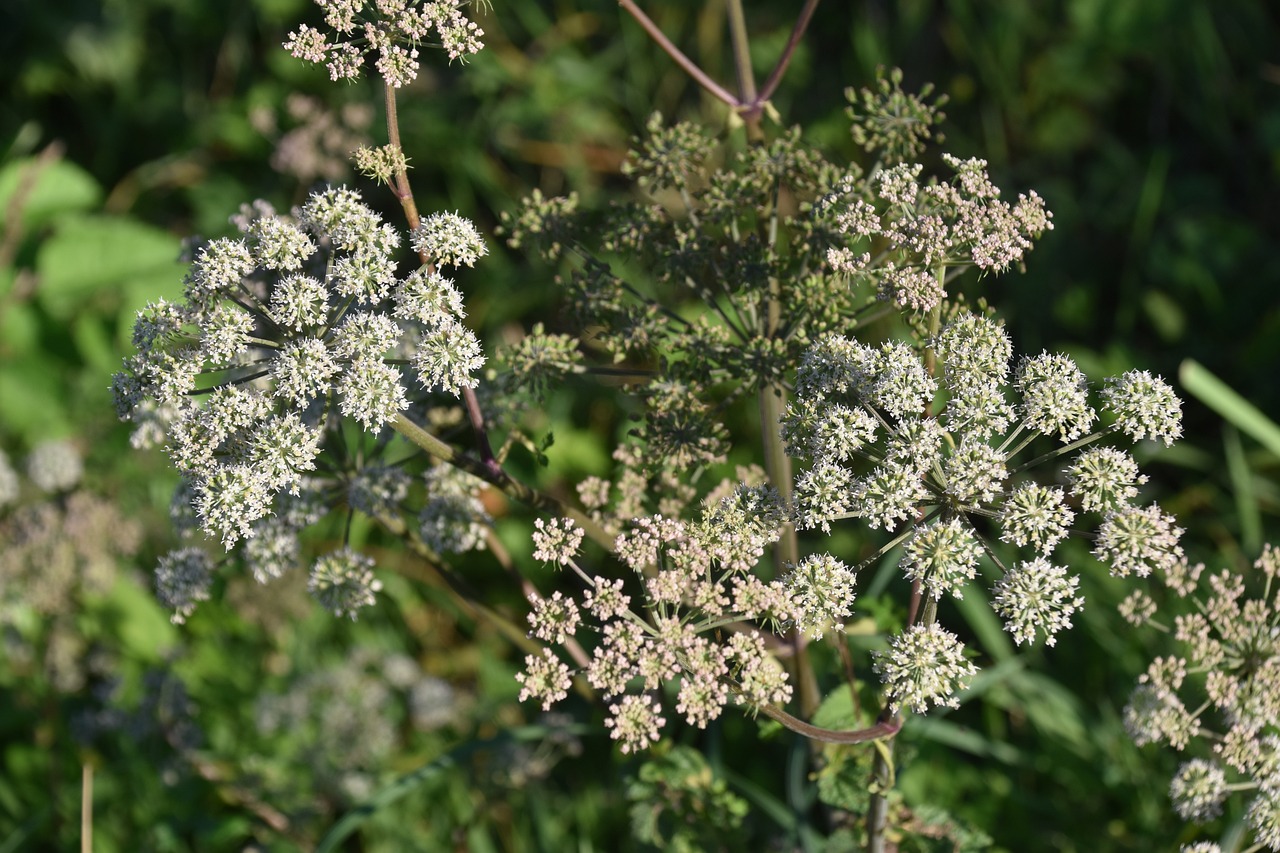The Eastern Hemlock (Tsuga canadensis) and Western Hemlock (Tsuga heterophylla) are two distinct species of hemlock trees that differ in habitat, physical characteristics, and ecological roles. The Eastern Hemlock thrives in the eastern United States and Canada, while the Western Hemlock is primarily found in the Pacific Northwest of North America. Key differences include needle shape, bark texture, and growth conditions.
Hemlock trees are an integral part of North American forests. They provide important ecological benefits, such as habitat for wildlife and stabilization of forest ecosystems. These trees are typically found in moist, shaded environments, where they can thrive alongside other coniferous and deciduous species. Understanding the differences between Eastern and Western Hemlocks can help in conservation efforts and proper management of forest resources.
Both species of hemlock exhibit unique features that can aid in their identification. For instance, the Eastern Hemlock often has a more compact growth habit compared to its western counterpart, which tends to grow taller and straighter. Additionally, each species has distinct needle characteristics that can be crucial for identification.
Physical Characteristics

Examining the physical characteristics of these trees reveals significant differences that are essential for proper identification. Below are key aspects that highlight the distinctions between the Eastern and Western Hemlocks.
| Characteristic | Eastern Hemlock | Western Hemlock |
|---|---|---|
| Needle Length | 0.5 to 1 inch | 0.75 to 1.5 inches |
| Needle Color | Dark green above, light green beneath | Yellowish-green to dark green |
| Bark Texture | Thin, scaly bark | Thick, furrowed bark |
| Typical Height | 40 to 70 feet | 70 to 100 feet |
The differences in needle length and color are particularly notable. Eastern Hemlock needles tend to be shorter and have a distinct dark green color on top with a lighter shade underneath. In contrast, Western Hemlock needles are generally longer and can vary from yellowish-green to dark green.
In terms of habitat, Eastern Hemlocks prefer cooler, moist environments that offer some protection from direct sunlight. They often grow in mixed forests alongside species like sugar maple and yellow birch. Western Hemlocks thrive in wetter conditions found in coastal regions and mountainous areas of the Pacific Northwest, frequently growing alongside Douglas firs and Sitka spruces.
Understanding these physical traits and habitat preferences is crucial for anyone interested in forestry, ecology, or botany. This knowledge not only aids in identifying these trees but also supports conservation efforts in their native environments.
Ecological Roles and Benefits
Both Eastern and Western Hemlocks play vital roles in their respective ecosystems. Their presence affects not only the forest structure but also the wildlife that depends on these trees for habitat and food. Understanding their ecological contributions helps underline the importance of conservation efforts.
Habitat for Wildlife
Hemlock trees serve as essential habitat for various species. The dense foliage of these trees provides cover and nesting sites for birds and small mammals. Additionally, the bark and needles are sometimes utilized by insects.
- Bird Species: Many bird species, including the Black-throated Green Warbler and various types of woodpeckers, find shelter in hemlock forests.
- Mammals: Small mammals such as squirrels and chipmunks use the trees for nesting and food. Even larger mammals, like deer, may seek refuge in hemlock groves.
- Insects: Hemlocks attract a variety of insects that feed on their foliage, which in turn supports insectivorous birds and other animals.
Soil Stabilization
The root systems of Eastern and Western Hemlocks play a crucial role in stabilizing soil. Their extensive networks help prevent soil erosion, especially in regions with steep terrain. This is particularly important in areas where heavy rainfall can lead to landslides or sediment runoff into waterways.
Moreover, these trees contribute to soil health by adding organic matter when needles fall to the ground. This process enriches the soil, promoting a diverse range of plant life beneath their canopy.
Carbon Sequestration
As with many tree species, Eastern and Western Hemlocks contribute significantly to carbon sequestration. Through photosynthesis, these trees absorb carbon dioxide from the atmosphere, helping to mitigate climate change. Their ability to grow in diverse environments makes them valuable allies in the fight against global warming.
Their long lifespan also means that they can store carbon for extended periods. A mature hemlock tree can sequester substantial amounts of carbon over its lifetime, contributing to overall ecosystem health.
Threats to Hemlock Populations
Despite their ecological importance, both Eastern and Western Hemlocks face various threats that jeopardize their survival. Understanding these threats is essential for effective conservation strategies.
Pests and Diseases
One of the most significant threats to Eastern Hemlocks is the Hemlock Woolly Adelgid (HWA), an invasive insect that feeds on the tree’s sap. This pest has caused widespread decline in hemlock populations across the eastern United States.
- Hemlock Woolly Adelgid: This tiny, aphid-like insect can weaken trees and eventually lead to their death if not controlled.
- Other Pests: Various beetles and insects can also affect hemlocks, making them vulnerable to disease and weakening their overall health.
Climate Change
Climate change poses another significant threat. Altered precipitation patterns and rising temperatures can lead to stress on hemlock populations. These conditions may favor pests like HWA, exacerbating existing problems.
Furthermore, changes in temperature can affect the growth patterns of these trees, potentially leading to reduced reproductive success. Hemlocks are adapted to specific climate conditions, and any significant changes could disrupt their life cycles.
Efforts to combat these threats include monitoring pest populations, implementing control measures, and fostering research on disease-resistant tree varieties. By addressing these challenges proactively, we can work towards preserving both Eastern and Western Hemlock populations for future generations.

Conservation Efforts for Hemlock Trees

Given the ecological significance of both Eastern and Western Hemlocks, various conservation efforts are underway to protect and restore these trees. These initiatives aim to address the challenges they face due to pests, diseases, and environmental changes. Understanding these efforts can help raise awareness and promote active participation in conservation.
Monitoring and Research Programs
Monitoring hemlock populations is critical for assessing the health of these trees and their ecosystems. Research programs focus on understanding the impact of pests like the Hemlock Woolly Adelgid, as well as identifying effective management strategies.
- Field Surveys: Regular surveys of hemlock stands help track pest populations and tree health. This data is essential for creating targeted intervention strategies.
- Research Collaborations: Collaboration between universities, government agencies, and conservation organizations enhances the scientific understanding of hemlock ecology and pest management.
- Citizen Science: Community involvement in monitoring efforts helps gather valuable data. Citizens can report sightings of pests and changes in tree health, contributing to broader research efforts.
Pest Management Strategies
Effective pest management is crucial for protecting hemlock trees from invasive species. Various strategies are implemented to mitigate the impact of pests while ensuring the health of the forest ecosystem.
- Chemical Controls: In cases of severe infestation, insecticides may be used to manage HWA populations. However, these chemicals must be applied carefully to minimize harm to non-target species.
- Biological Controls: Introducing natural predators of the Hemlock Woolly Adelgid, such as certain beetles, has shown promise in controlling pest populations without chemical intervention.
- Cultural Practices: Improving the overall health of hemlock ecosystems through practices like selective thinning can enhance tree resilience against pests.
Habitat Restoration Initiatives
Restoration projects aim to rebuild healthy hemlock ecosystems by reintroducing native plants and removing invasive species that threaten hemlock growth. These initiatives help ensure that the forests remain biodiverse and resilient.
- Replanting Efforts: In areas where hemlocks have significantly declined, replanting native hemlock seedlings can help restore populations.
- Invasive Species Management: Removing invasive plants that compete with hemlocks for resources is a critical part of restoration efforts. This allows native species to thrive.
- Community Engagement: Local communities are often involved in restoration projects, fostering a sense of stewardship towards their natural surroundings.
Educational Outreach and Awareness
Raising awareness about the importance of Eastern and Western Hemlocks is essential for garnering support for conservation efforts. Educational outreach programs aim to inform the public about the ecological roles of these trees and the threats they face.
Workshops and Seminars
Workshops and seminars hosted by environmental organizations provide opportunities for learning about hemlock identification, ecology, and conservation practices. These events encourage community engagement and promote stewardship.
- Tree Identification Workshops: Participants learn to identify Eastern and Western Hemlocks along with other tree species, enhancing their knowledge of local biodiversity.
- Conservation Seminars: Experts share insights on current research and conservation practices, helping attendees understand how they can contribute.
Online Resources and Campaigns
The availability of online resources has greatly enhanced public access to information about hemlocks. Websites, social media campaigns, and webinars offer valuable educational materials that anyone can access.
- Informational Websites: Many organizations maintain websites with detailed information about hemlocks, their habitats, and conservation strategies.
- Social Media Campaigns: Engaging posts and shares on social media platforms help spread awareness about hemlock conservation initiatives.
Through these educational efforts, individuals are encouraged to take an active role in preserving Eastern and Western Hemlocks. Promoting a deeper understanding of these trees fosters community support for ongoing conservation initiatives.
Final Considerations for Hemlock Conservation

As we reflect on the significance of Eastern and Western Hemlocks, it becomes clear that these trees are more than just components of their respective ecosystems. They represent rich biological diversity and play critical roles in maintaining forest health. Therefore, their conservation is essential not only for their survival but also for the myriad species that rely on them.
Importance of Biodiversity
Biodiversity is crucial for ecosystem resilience. Hemlocks contribute to this diversity by providing habitat and resources for a wide range of wildlife. Preserving hemlock populations ensures that other species can thrive alongside them. This interdependence highlights the importance of protecting all elements within an ecosystem.
- Support for Wildlife: The various animal species that depend on hemlocks, from birds to mammals, illustrate the interconnectedness of forest ecosystems.
- Plant Diversity: Hemlocks influence the types of understory plants that grow in their shade, promoting a rich tapestry of flora.
Community Involvement and Stewardship
Community involvement plays a vital role in the conservation of hemlocks. Local populations can contribute significantly through volunteer efforts, education, and advocacy. Engaging communities fosters a sense of ownership and responsibility towards local ecosystems.
- Volunteer Opportunities: Community members can participate in tree planting, monitoring programs, and invasive species removal activities to actively contribute to conservation.
- Advocacy: Raising awareness about the importance of hemlocks can lead to increased support for conservation policies and funding.
Future Research Directions
Ongoing research is essential for developing effective conservation strategies. Scientists continue to study hemlock genetics, pest resistance, and ecosystem interactions to better understand how to protect these trees. Future research might focus on:
- Genetic Diversity: Understanding the genetic variation within hemlock populations can inform breeding programs aimed at enhancing pest resistance.
- Climate Adaptation Studies: Research on how hemlocks respond to changing climate conditions can help develop strategies to mitigate the impact of climate change.
- Ecological Interactions: Studies examining how hemlocks interact with other species in their ecosystem can provide insights into maintaining biodiversity.
Conclusion
The Eastern Hemlock and Western Hemlock are vital components of their respective ecosystems, offering numerous ecological benefits while facing significant threats. Understanding their differences, ecological roles, and the challenges they encounter is crucial for effective conservation efforts. By engaging communities, advocating for responsible management practices, and supporting ongoing research, we can ensure that these magnificent trees continue to thrive in our forests.
As stewards of the environment, it is our responsibility to protect the natural heritage represented by hemlocks. Through collective action and informed decision-making, we can foster healthier ecosystems that benefit both wildlife and future generations. Embracing the knowledge gained about these trees empowers us to take meaningful steps towards their preservation and the sustainability of our forests as a whole.
